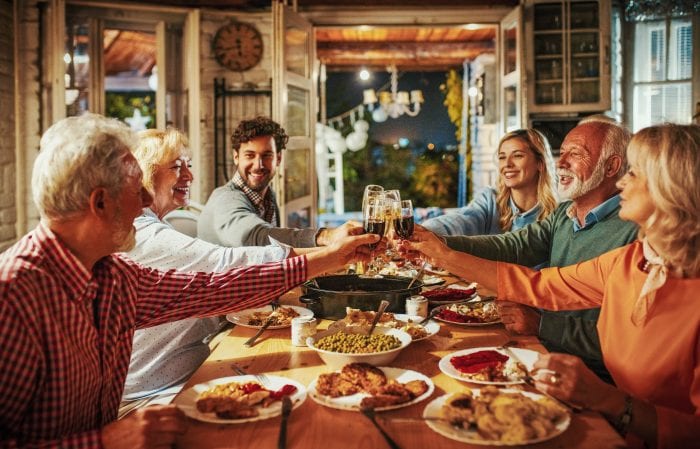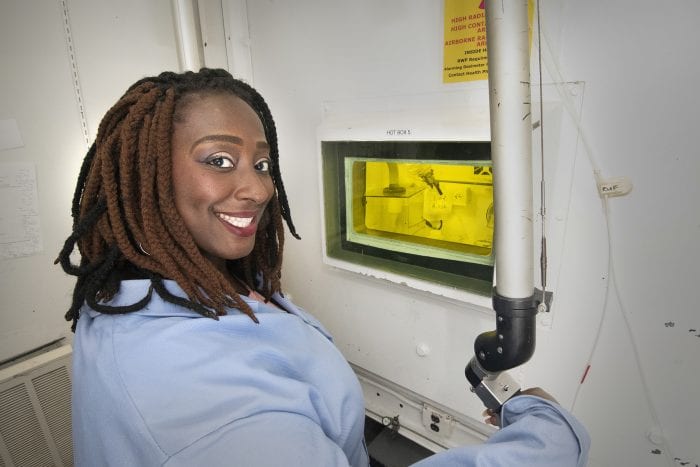By Barbara Beltrami
Writing this column is a real challenge this week because in our house we’re not big fans of leftovers. Actually, there’s only one Thanksgiving leftover that I really crave, and that’s a sliced turkey breast and Swiss cheese sandwich with lettuce and Russian dressing on rye bread. But then, as challenges often do, this one got me thinking. It was going to be just the two of us for Thanksgiving dinner and we surely were going to have leftovers. There would be no happy leftover aficionados upon whom we could foist them as we usually did. There just had to be things we could recycle and enjoy over the weekend. So here’s what I came up with. I thought, why not Swedish pancakes with cranberry sauce instead of lingonberries? Or turkey, mashed potato and stuffing patties or turkey minestrone?
Swedish Pancakes with Cranberries

YIELD: Makes about 12 pancakes
INGREDIENTS:
1 stick unsalted butter
1 cup flour
1 3/4 cups milk
3 eggs
1 teaspoon vanilla extract
1/4 teaspoon salt
1/4 cup granulated sugar
1 cup cranberry sauce
DIRECTIONS:
Preheat oven to 200 F. In a 10-inch skillet melt half the butter. In a blender combine the melted butter, flour, milk, eggs, vanilla and salt and process until smooth. Over medium heat, melt one teaspoon butter in same skillet and tilt pan so sides and bottom are coated; when a drop of water bounces on the skillet ladle one-third cup of batter into skillet and quickly tilt pan again so batter covers bottom of skillet.
Cook till set, about a minute or a little more, then using a rubber spatula, lift edges and flip and cook till lightly golden on other side, about half a minute or less; transfer to warm ovenproof plate and place in oven. Repeat procedure with remaining batter. Fold or roll pancakes, sprinkle with sugar and top with a dollop of cranberry sauce. Serve hot or warm with coffee, tea or hot chocolate.
Turkey, Stuffing and Mashed Potato Patties
YIELD: Makes about 12 pancakes
INGREDIENTS:
1 egg
1 tablespoon cold water
1 cup mashed potatoes
1 cup stuffing
1 cup finely chopped cooked turkey
2 scallions, cleaned and sliced thin
1 to 1 1/4 cups toasted unseasoned bread crumbs
1/3 cup olive oil
DIRECTIONS:
In a small bowl mix the egg and water. In a large bowl combine the potatoes, stuffing, turkey and scallions. Shape them into 2-inch patties and place on a rimmed baking sheet. Gently dip the patties, one at a time, into egg and water mixture, then bread crumbs and place them back on the baking sheet. Warm one-third of the oil in a large skillet over medium-high heat. With a spatula carefully lower each patty into skillet; fry, turning once, until crispy on both sides, about 5 to 7 minutes. Remove and drain on paper towels. Serve hot or warm with hot turkey gravy or cranberry sauce.
Turkey Minestrone

YIELD: Makes 4 to 6 servings
INGREDIENTS:
1/4 cup olive oil
1 onion, chopped
1 celery rib, sliced
1 carrot, peeled and sliced
1 garlic clove, minced
1 small zucchini, diced
8 unsauced cooked Brussels sprouts or 1 1/2 cups unsauced cooked broccoli, cauliflower or green beans
1 cup canned petite diced tomatoes with their juice
1 cup shredded cooked turkey
1 cup canned cannellini beans, rinsed, drained
1 bay leaf
3 cups turkey stock or broth
1/2 cup uncooked tubetti, penne or ditalini pasta
2 cups finely chopped escarole
Salt and freshly ground black pepper to taste
3/4 cup grated Parmesan cheese
DIRECTIONS:
In a large pot heat oil over medium-high heat. Add onion and celery and cook, stirring frequently until they soften, about 5 to 7 minutes. Add carrot, garlic, zucchini and cooked veggie and cook, stirring frequently, until the carrots start to soften, about 3 to 4 more minutes. Add tomatoes, turkey, beans, bay leaf and stock; bring to a boil, then reduce heat and cook covered on low heat until all veggies are tender.
Ladle one and a half cups of soup into bowl of food processor and puree; return to pot. Add pasta and escarole, and continue cooking over medium heat, stirring occasionally, until pasta is al dente and escarole is tender and limp; remove bay leaf. Season with salt and pepper, ladle into tureen or soup bowls and sprinkle with grated cheese if desired. Serve with rustic bread and olive oil.

















